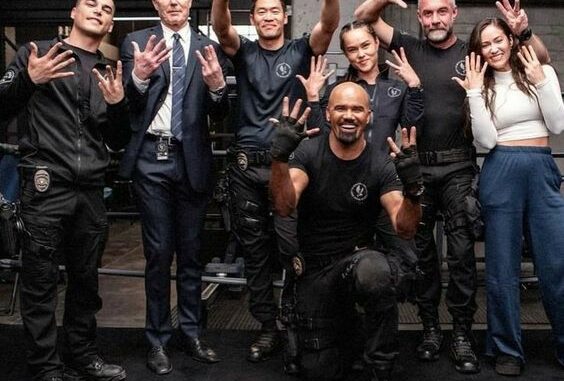
Introduction
S.W.A.T. isn’t just a thrilling police drama; it’s a show that dives deep into the complexities of modern society. With each episode, it tackles tough topics that resonate with viewers and reflect real-world issues. From systemic racism to mental health challenges within law enforcement, S.W.A.T. serves as a mirror, showing us the struggles and triumphs that happen in our communities. Let’s explore how this series addresses these critical issues and why it matters.
Understanding the S.W.A.T. Framework
What is S.W.A.T.?
S.W.A.T., or Special Weapons and Tactics, is a specialized unit in law enforcement known for handling high-risk operations. The show highlights a diverse team facing real-life challenges, making it a compelling blend of action and social commentary.
Why Address Real-World Issues?
By confronting real-world issues, S.W.A.T. fosters discussions that go beyond entertainment. It engages audiences in conversations about the societal challenges we face, making viewers more aware of the complexities surrounding law enforcement.
Key Issues Addressed in S.W.A.T.
1. Systemic Racism
The Reality Check
One of the most pressing issues tackled by S.W.A.T. is systemic racism. The show doesn’t shy away from depicting how racial biases affect policing and community relations. By showcasing these dynamics, S.W.A.T. sparks important conversations about race and justice.
Character Perspectives
Characters like Hondo Harrelson, played by Shemar Moore, often find themselves navigating the complexities of their identities while striving to serve their community. This adds depth to the narrative, illustrating that the struggle for equality is ongoing.
2. Mental Health Awareness
Breaking the Stigma
Mental health is another significant theme in S.W.A.T. The show highlights the psychological toll that high-stress jobs can take on officers. By portraying characters grappling with mental health issues, S.W.A.T. helps break the stigma surrounding mental health in law enforcement.
Character Development
Characters like Deacon Kay often face internal battles, showcasing how the pressures of their jobs affect their personal lives. This adds a layer of realism and empathy to the narrative, reminding viewers that these officers are human too.
3. Community Relations
Building Trust
The relationship between law enforcement and the community is a central theme in S.W.A.T. The series emphasizes the importance of building trust through open communication and community engagement.
Real-World Parallels
By depicting officers participating in community events and listening to residents’ concerns, S.W.A.T. mirrors real-world efforts to improve police-community relations. This portrayal encourages viewers to consider the importance of collaboration in fostering safer neighborhoods.
4. Gender Dynamics in Policing
Women in Law Enforcement
S.W.A.T. also tackles issues of gender within law enforcement, showcasing strong female characters like Jessica Cortez. Her presence on the team challenges traditional gender roles and demonstrates that women can excel in high-pressure environments.
Impact on Perception
By portraying female officers as competent and respected, the show contributes to changing perceptions about women in law enforcement, encouraging more diverse representation in the field.
Character-Driven Storytelling
The Power of Relationships
The characters in S.W.A.T. are not just officers; they’re relatable individuals who face the same societal issues that viewers do. The friendships and conflicts among team members add depth to the narrative, highlighting the importance of support in tackling tough issues.
Mentorship and Growth
The mentorship dynamic, particularly between Hondo and Street, illustrates how personal growth can lead to positive change. Their relationship serves as a reminder that learning from one another is crucial in overcoming challenges.
The Role of Action and Drama
Balancing Action with Social Commentary
While S.W.A.T. is filled with thrilling action sequences, it successfully balances this with meaningful storytelling. The intense scenarios allow the characters to confront real-world issues, providing a platform for important discussions.
Engaging the Audience
By incorporating action with social commentary, S.W.A.T. keeps viewers engaged while also challenging them to think critically about the issues presented. This balance ensures that the show remains both entertaining and thought-provoking.
Viewer Impact and Reception
Starting Conversations
S.W.A.T. has sparked conversations among audiences about issues that are often overlooked in mainstream media. By addressing these topics, the show encourages viewers to reflect on their own perspectives and experiences.
Changing Perceptions
Through its portrayal of law enforcement and the communities they serve, S.W.A.T. contributes to changing perceptions about policing in America. The series emphasizes that understanding and empathy are key in fostering positive relationships.
Conclusion
*Tackling tough topics through engaging storytelling, S.W.A.T. proves to be more than just an action-packed series. It serves as a vital platform for discussing the real-world issues that affect us all, from systemic racism to mental health awareness. By reflecting on these challenges, S.W.A.T. encourages viewers to engage in meaningful conversations and fosters a greater understanding of the complexities surrounding law enforcement today.
FAQs
1. How does S.W.A.T. address systemic racism?
The show depicts the challenges faced by characters navigating racial biases and highlights the ongoing struggle for equality in policing.
2. What role does mental health play in S.W.A.T.?
S.W.A.T. emphasizes the mental health struggles of officers, breaking the stigma and promoting awareness of the psychological toll of law enforcement.
3. How does S.W.A.T. portray community relations?
The series showcases the importance of trust and communication between law enforcement and the community, reflecting real-world efforts to improve these relationships.
4. What is the significance of female characters in S.W.A.T.?
Characters like Jessica Cortez challenge gender stereotypes in law enforcement, promoting diversity and showcasing women’s capabilities in high-pressure roles.
5. How does S.W.A.T. balance action with social commentary?
The show combines thrilling action sequences with meaningful storytelling, engaging viewers while addressing important social issues.
